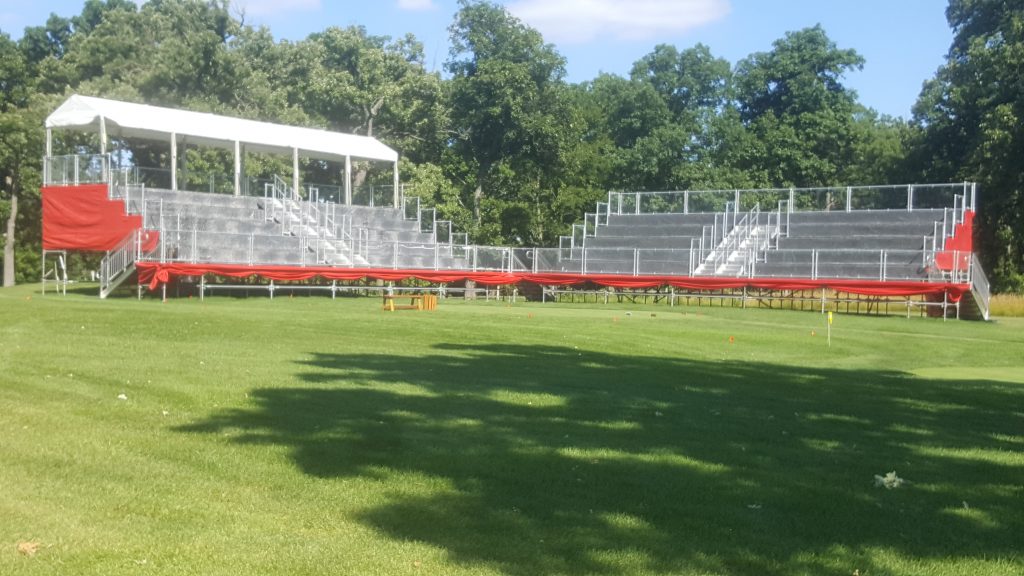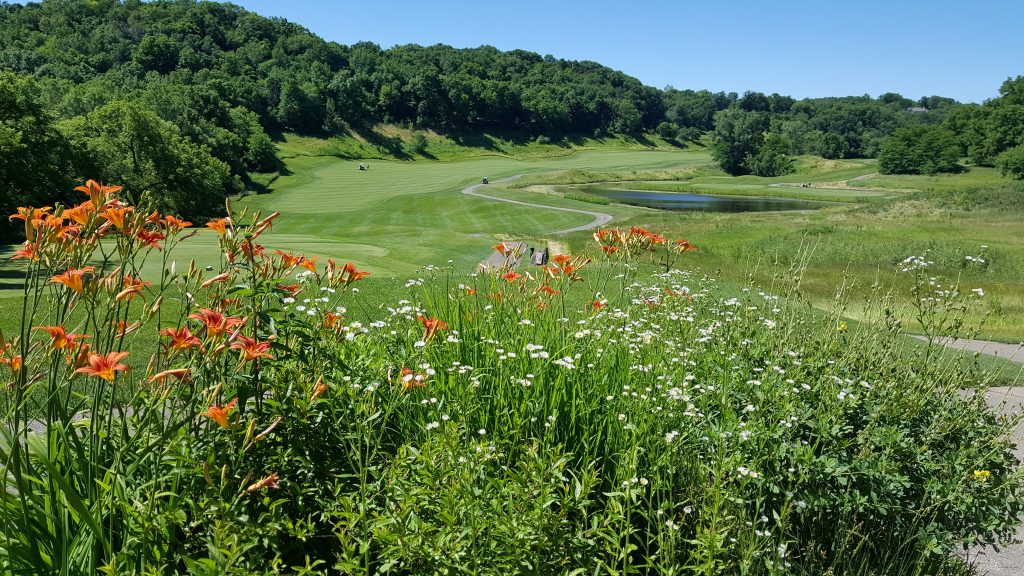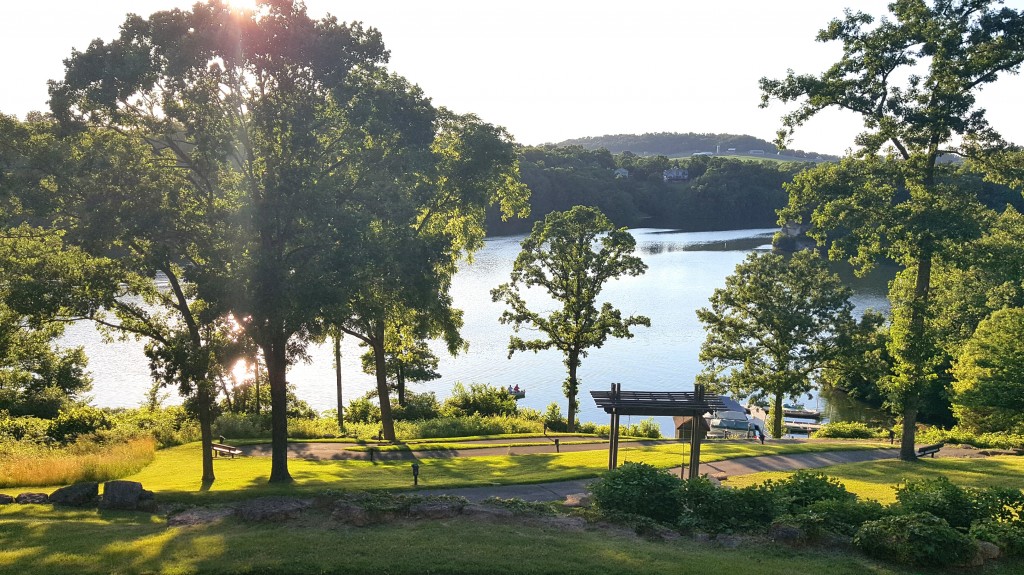Rarely have a series of big Chicago area tournaments been condensed into such a short time frame. Beginning on Monday there will be four such events crammed into a 10-day period.
First up is the 22nd Illinois Women’s Open, at Mistwood in Romeoville. The tourney’s pro-am is on Sunday and will conclude with a gala dinner in Mistwood’s new clubhouse, marking the first time the Great Hall will be in operation at the course’s showcase tournament. The three competitive rounds tee off on Monday with the field cut to the low 30 and ties after 36 holes.
Mistwood director of golf Andy Mickelson extended the entry deadline after about 50 players – 10 of them professionals – met the original signup requirement.
The tourney won’t have a defending champion, as Rockford teen-age sensation Madasyn Pettersen is focusing on the national junior tournaments instead.
“A few conflicting things drew down the size of the field,’’ said Mickelson. Perennial contender Jenna Pearson of Wheaton heads the competitors. The Symetra Tour player won the IWO as an amateur in 2006, lost the title the following year in a 10-hole playoff and then won it again as a professional in 2011.
Meanwhile, the 86th Illinois State Amateur starts its three-day run on Tuesday at St. Charles Country Club and the biggest tournament of this season – the LPGA’s UL International Crown – begins four days of competition next Thursday, July 21.
Then the 67th Illinois Open, at two St. Charles courses – Royal Fox and Royal Hawk — begins day after the Crown ends. Last of the 258 players advancing to the Illinois Open will be determined at the Last Chance Qualifier next Wednesday at The Grove, in Long Grove. It’s open to players who missed the entry deadline for the seven state-wide qualifying events, and those who didn’t advance through one of those qualifiers can also bid again for one of the last three spots in the starting field at St. Charles.
Ruffled Feathers unveils renovation
Dallas-based Arcis Golf has unveiled its $2 million renovation of Ruffled Feathers, the Lemont course boasting the only Pete Dye-designed layout in the Chicago area. Both the course and clubhouse underwent extensive upgrades. Arcis has announced it will spend $50 million in major capital improvements at its 66 public and private facilities nation-wide.
As for the Ruffled Feathers work, general manager Victor Rodarte described it as “a true revival of the entire property.’’
Arcis also operates five other Chicago area courses – Fresh Meadow, in Hillside; Mill Creek and Eagle Brook, in Geneva; Tamarack, in Naperville; and Whitetail Ridge, in Yorkville.
Lewis looks forward to Crown
Sandwiched between last week’s U.S. Women’s Open and the Olympics, the UL International Crown has plenty of competition for the women’s golf spotlight but America star Stacy Lewis is already looking forward to the second playing of the global team event.
“It was interesting to be part of the first one,’’ Lewis said during the U.S. Women’s Open in California. “Nobody knew how the format would play out as far as the team aspect. It was like the Solheim Cup on a smaller scale.’’
That’s a good thing, she said.
“There were only four of us (on the U.S. team), so we could have our families around a little more,’’ said Lewis. “It was more of a relaxing week. We could hang out as a group, and it was fun playing the other countries.’’
Here and there
Sabrina Bonanno, of Norridge, and Bing Singhsumalee, of Naperville, earned berths in the Aug. 1-7 U.S. Women’s Amateur in Springfield, Mass.. Both collegiate stars shot 1-under-par 70s and tied for fifth in the sectional qualifier at Sportsman’s, in Northbrook. Bonanno attends Arkansas-Little Rock and Singhsumalee goes to Illinois.
The Chicago golf community lost two giants from the club professional ranks last week with the passing Leon McNair and Hubby Habjan. McNair, 75, led in the development of Fox Bend, in Oswego, and Habjan, 84, was a long-time head man at Onwentsia, in Lake Forest. Both are members of the Illinois Golf Hall of Fame.
Illinois coach Mike Small, already in this week’s new Lincoln Land Championship on the Web.com Tour, will also be in the field for the U.S. Senior Open next month. He was medalist at a qualifying tournament last week in Indianapolis.
KemperSports has taken over the management of Boughton Ridge, the nine-hole executive length course that has served Bolingbrook residents for over 35 years. KemperSports will also manage its Ashbury’s restaurant.
The Illinois PGA’s senior members have a busy competitive stretch. The Thompson Cup matches against the Chicago District Golf Association’s top amateurs is Wednesday on Olympia Fields’ South course and the IPGA Senior Masters follows on Monday at Onwentsia.
The Schaumburg Park District’s ninth annual Links Technology Cup has been scheduled for Aug. 10 at Schaumburg Golf Club. It includes a Taste on the Tee showcase of food and beverages on most every hole. Proceeds benefit the district’s recreation scholarship program.










